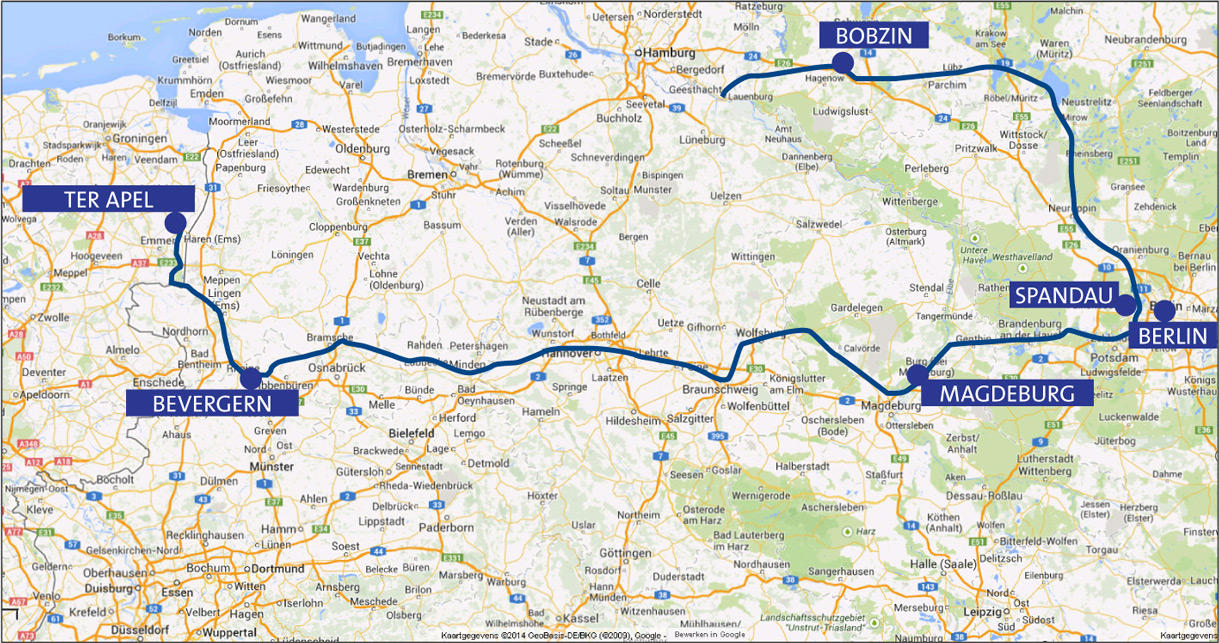Mike and Sukey Perry spent the 2013 season cruising from Maasbracht to Lübeck via Berlin and the Mecklenburg Lakes on their 43.9 Grand Sturdy Salamander II. So here we are alongside, just before the double lock on a brand new Dutch canal – The Veenvaart, connecting Erica with Ter Apel. And here on the warmest June evening so far, it seems the entire population of Erica and Emmen has come out to have a look. They come on bikes, on foot, on roller blades, on motorbikes, on quad bikes and even just now, two swimmers. They stripped off, leapt into the peaty water and swam off into the sunset.
What a thing this is. A new canal! Everyone’s pleased and proud. They stop by the double lock to look at the workings, they shout “Hi there” or “Evening” in Dutch and if they speak English, we exchange enthusiasms. It’s fabulous, it’s amazing, it’s just plain nice. And all the time, a late cuckoo adds an extra note of joy. It’s such a celebration to have a major engineering project completed in a recession. Now on this June evening, all the tax hikes and job losses are forgotten. It’s just about smiling people coming to see what European money can buy – the benefits of membership – and they like what they see.

